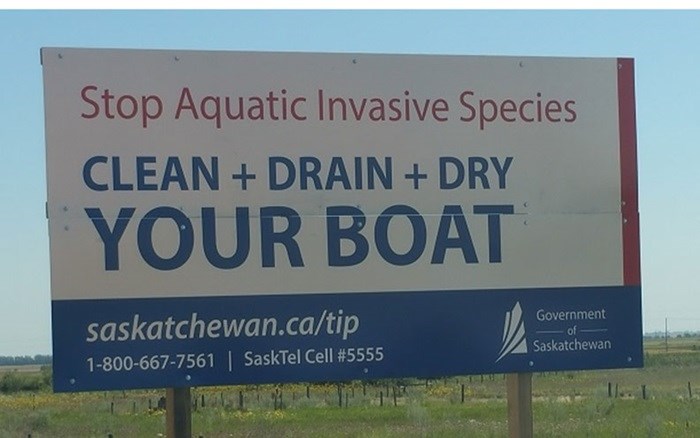The Government of Saskatchewan’s efforts to keep invasive species out of Saskatchewan waterbodies got a boost recently, with a $25,000 contribution from SaskPower to the Ministry of Environment’s aquatic invasive species (AIS) program. This is the second year the corporation has financially supported the program.
“The threat of invasive species to aquatic ecosystems and infrastructure requires a coordinated effort to manage effectively,” Environment Minister and Weyburn-Big Muddy MLA Dustin Duncan said. “SaskPower remains an important and much appreciated partner in AIS prevention in Saskatchewan.”
The SaskPower contribution will help the ministry expand its existing inspection program to better monitor watercraft coming into the province. The ministry currently has eight mobile watercraft decontamination units to support its AIS inspection and decontamination program.
“SaskPower's contribution to the AIS program is an example of our ongoing commitment to environmental stewardship, and will ultimately help to safeguard our infrastructure from potentially costly damage,” said Tim Eckel, SaskPower Vice-President of Asset Management, Planning and Sustainability. “Continued collaboration with our government and non-government partners will be crucial as we work toward a shared goal of maintaining a healthy aquatic environment in Saskatchewan.”
Saskatchewan’s AIS program focuses on prevention through public education, promoting Clean, Drain, Dry best practices for watercraft, roadside boat inspections, decontaminations and regular monitoring of Saskatchewan’s waterbodies. Prevention of zebra and quagga mussels remains a top priority for the province, with monitoring taking place on more than 120 lakes province-wide. To date, no invasive mussels have been found in Saskatchewan waterbodies.
AIS are plant, animal and invertebrate species that threaten waterways and damage aquatic habitat, fisheries, valuable recreational resources and important power generation, irrigation and municipal water infrastructure. AIS can be impossible to eliminate once established in a waterbody, and can cost millions of dollars annually to manage.
Saskatchewan works with the federal Canada Border Services Agency and Department of Fisheries and Oceans, as well as provincial organizations and provincial governments in British Columbia, Alberta, Manitoba and the Yukon, to co-ordinate prevention efforts across Western Canada.




